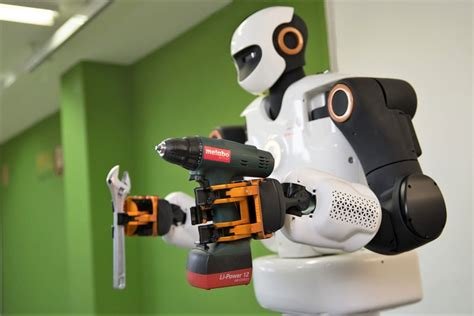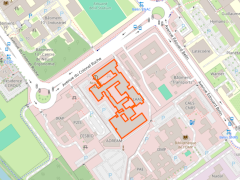Motion planning and control in robotics
One of the main research activities of the Gepetto team consists of developing and testing new techniques and algorithms for automatic generation of movements as well as the control laws allowing them to be executed on physical robots.
Optimal learning and control

Planning movements in real time for robots as complex as humanoid robots in unknown environments remains challenging to date. Our work aims to make this objective achievable.
- by massively precalculating optimal movements offline which are stored in databases,
- by adapting these movements online using predictive control,
- by exploiting data from on-board sensors to control these movements in a closed loop.
These works are mainly conducted in the framework of theInstitut National d'Intelligence Artificielle et Naturelle de Toulouse (ANITI) in which Nicolas Mansard holds the chair Génération de Mouvements pour les robots complexes. Olivier Stasse is co-chair . This activity have also been conducted in the past European project MEMMO.
Integration
Most works relative to model predictive control are integrated in the software platform crocoddyl described in
- Carlos Mastalli, Rohan Budhiraja, Wolfgang Merkt, Guilhem Saurel, Bilal Hammoud, Maximilien Naveau, Justin Carpentier, Sethu Vijayakumar and Nicolas Mansard , Crocoddyl: An Efficient and Versatile Framework for Multi-Contact Optimal Control.
Automatic motion planning
The problem of automatic motion planning consists of automatically calculating a collision-free trajectory for an articulated system in an environment cluttered with obstacles. This problem comes in various instances depending on whether the moving system is subject to kinematic or dynamic constraints. The Gepetto team latest work in this area focuses on the planning of manipulation movements. In this instance, objects are moved by robots. This implies specific constraints on the movements of the system: an object not held by a robot must remain immobile, an object held by a gripper is rigidly linked to this gripper.
Intégration
These works are integrated in the software platform Humanoid Path Planner (HPP) described in
- Florent Lamiraux, Joseph Mirabel. Prehensile Manipulation Planning: Modelling, Algorithms and Implementation.
Example
The video below shows a trajectory planned for two robots that are tasks to assemble two magnetic spheres on a cylinder.
Motion planning and visual servoing
Visual servoing makes it possible to control a robot on the basis of what it perceives using a camera, for example to position the camera precisely with respect to an object whose exact position is not known. This is particularly useful for grasping objects or for carrying out machining operations (drilling, deburring) on a part. However, a big disadvantage of visual servoing is the difficulty of taking into account the collisions of the robot with its environment because only the position of the camera is taken into account in the control.
We propose a framework to integrate visual servoing along planned trajectories. The general idea is to plan movements with a model of the robot and its environment, then to follow these trajectories with different controllers depending on the phases of the movement. When two moving objects are close to each other, a visual servoing controller replaces the control in the joint space. The controllers are synthesized and activated automatically by our software.
Example
The animation below shows a robot performing pointing tasks on a part. The robot movements are controlled in the joint space to position itself in front of each drilling to be pointed, then by visual servoing for the pointing movement itself. A camera mounted on the end effector of the robot continuously localizes the part with respect to the robot.












